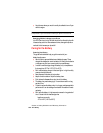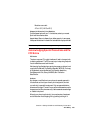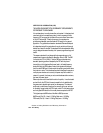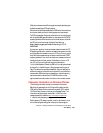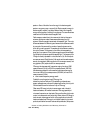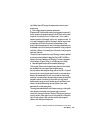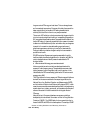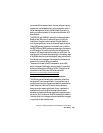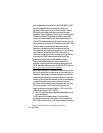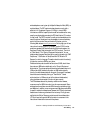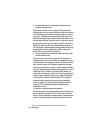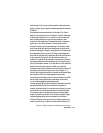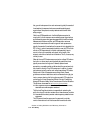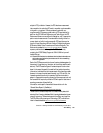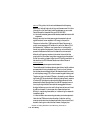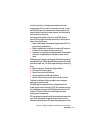
Section 4: Safety Guidelines and Warranty Information
110 4A: Safety
Under the National Environmental Policy Act of 1969 (NEPA), the FCC
has certain responsibilities to consider whether its actions will
significantly affect the quality of the human environment. Therefore,
FCC approval and licensing of transmitters and facilities must be
evaluated for significant impact on the environment. Human exposure to
RF radiation emitted by FCC-regulated transmitters is one of several
factors that must be considered in such environmental evaluations. In
1996, the FCC revised its guidelines for RF exposure as a result of a multi-
year proceeding and as required by the Telecommunications Act of 1996.
Radio and television broadcast stations, satellite-earth stations,
experimental radio stations and certain wireless communication
facilities are required to undergo routine evaluation for RF compliance
when they submit an application to the FCC for construction or
modification of a transmitting facility or renewal of a license. Failure to
comply with the FCC's RF exposure guidelines could lead to the
preparation of a formal Environmental Assessment, possible
Environmental Impact Statement and eventual rejection of an
application. Technical guidelines for evaluating compliance with the
FCC RF safety requirements can be found in the FCC's OET Bulletin 65.
http://www.fcc.gov/oet/info/documents/bulletins/#65
Low-powered, intermittent, or inaccessible RF transmitters and facilities
are normally excluded from the requirement for routine evaluation for
RF exposure. These exclusions are based on standard calculations and
measurement data indicating that a transmitting station or equipment
operating under the conditions prescribed is unlikely to cause exposures
in excess of the guidelines under normal conditions of use. Such
exclusions are not exclusions from compliance, but, rather, exclusions
from routine evaluation. The FCC's policies on RF exposure and
categorical exclusion can be found in Section 1.1307(b) of the FCC's
Rules and Regulations [(47 CFR 1.1307(b)].
7. How can I obtain the Specific Absorption Rate (SAR) value for
my wireless phone?
The FCC requires that wireless phones sold in the United States
demonstrate compliance with human exposure limits adopted by the
FCC in 1996. The relative amount of RF energy absorbed in the head of a



